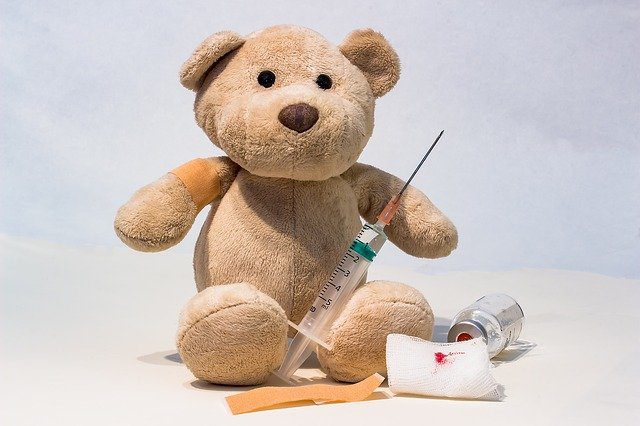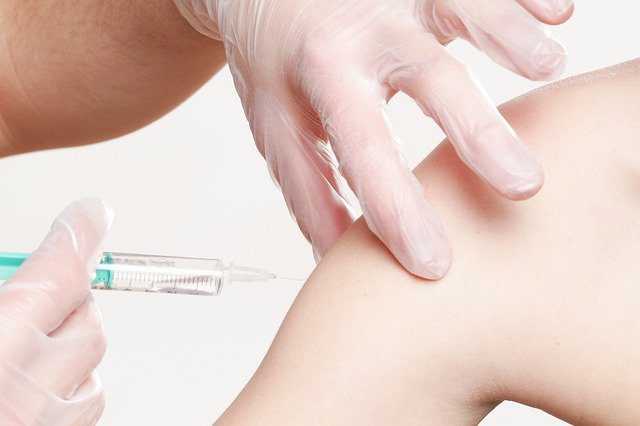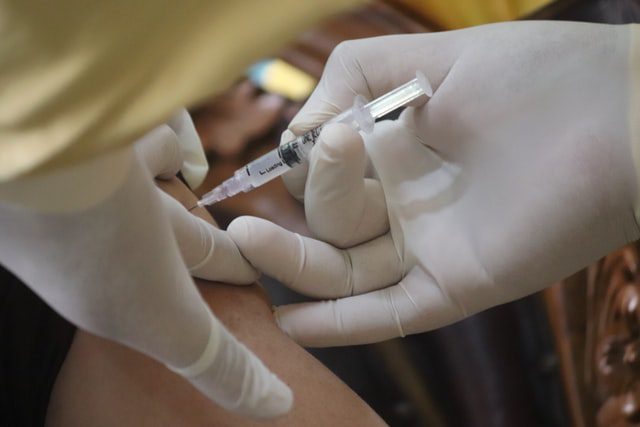
Where to Inject Hormones
Hormones are intramuscular injections, which means that they are injected straight into the muscle.

Intramuscular Injection
The most common sites for intramuscular injections are the buttocks and thighs, although sometimes it might be necessary to inject in the upper arm. It is important to confirm the best site with your doctor as there might be external factors associated with your doctor’s preference for the injection site.
Once you know where to inject, it is important that you remember that you can switch sides—one month you do this thigh and the next month you do the other thigh, etc.
What to Expect at Injection Site
Pain or tenderness at an injection site is fairly common. You can reduce the risk of tenderness by not moving the leg or arm much on the day of injection. You should also avoid touching it.
Some swelling might occur, but should not be extreme and should dissipate fairly quickly, within a day or two. Some redness might also be present at the injection site.

When to Contact a Doctor
It is best to contact your doctor if you are in a lot of pain, the swelling is extreme, the redness is persistent or is spreading, if the injection site is warm to the touch, or if you have a fever.
If you are showing signs of complications or experiencing weakness in the muscle that you injected in, you need to contact healthcare services. For the most part, complications associated with injections are easy to treat, but in some cases, they can be severe and will require emergency treatment.
Allergies to hormone medicines are rare, but if you experience chest pain or difficulty breathing, you should seek out medical services immediately.
Managing the Medication
Make sure that you understand how to manage your medication. Ask your doctor about the proper storage of the medication. If the vial is damaged, then it is best to discard the whole thing. There are too many risks involved with taking medication from a damaged vial.
Expiration Date
Be mindful of the expiration date. Expired medication can be very dangerous. Find out from your doctor or your pharmacist what to do with expired medication. The date will be displayed on the vial, if the date is not visible on the vial it is best to notify the pharmacist.
Dose
Your doctor will provide you with an exact dosage for your medication. It is extremely important that you stick to this dosage unless you are instructed otherwise by your doctor.
Exceeding the dose prescribed by your doctor can have cause liver disease and it will not speed up your transition. Lowering the dose yourself is also not advised. If you have any questions or concerns about dosage it is better to consult your doctor rather than try to fix it yourself
Disposal
It is important that you dispose of equipment, like the syringe, and medications responsibly. Many countries have specific laws about how to dispose of medicines and medical equipment.
While it is not advised that you reuse a syringe (without the needle), it might be necessary occasionally. In such a case make sure that you clean and sterilize the syringe thoroughly before use. Water alone is not enough. Some kind of disinfectant must be used. The syringe should also be rinsed off before use. Remember to also push the cleaning liquid and water through the tip of the syringe as well.
Needles can never be reused and should never be shared with others. If you do not have a sharps container at home you will be able to bring used needles and syringes to drop-off points where you can exchange them for new ones.
When you are done with a needle remember to put back its cap, even if it is going into a sharps container. Always make sure that you have fresh supplies. Alcohol swabs and plasters can be disposed of in the trash, but make sure that any blood on them is covered.
Before Injecting
Wash your hands before administering injections! Do this thoroughly. Also, consider using hand sanitizer after washing so that you can be extra sure that your hands are free from harmful microbes.
Even though you will be using a sterile needle, it might be a good idea to wipe it down with an alcohol swab as well. Always make sure you are using a new needle every time for your injections, even if you are not sharing needles.
Swab down the rubber cap of the medicine bottle as well before inserting the needle. Draw up exactly the right amount of medicine. If you are struggling to pull up the plunger, here is a pro-tip: Before inserting the needle into the medicine bottle, draw up the same amount of air as the medication that you need, then inject the air into the bottle before drawing up the medicine. This should make it easier to pull the plunger.
Make sure that you have the right amount of medicine in the syringe for all your injections.
Remember to ask your doctor whether you should make sure that all of the air is out of the syringe and the needle before injecting, or whether a small bubble of air should remain. With intravenous injections, it is super important that there is no air in the syringe or the needle at all, but with intramuscular injections, you may be required to leave a very small air bubble in the syringe.
In some cases where treatment is administered into the muscle, a little bit of air can form a kind of plug to keep the medication in place. Although it is really important that you confirm with your doctor which option is best as they might advise removing all the air for intramuscular injections as well.
The last step to take before injecting is to sterilize the injection site.
Injecting
You will need to insert the needle at a 90-degree angle for this type of injection. This means straight down, not at a skew angle. Make sure that you put the needle in deep enough to reach the muscle (your doctor will likely show you how to measure this on the needle itself).
Pull back the plunger a little bit to make sure that you have not hit a vein. If blood comes back into the syringe freely, pull the needle out a little bit and try again. If it keeps happening, consider starting over. It is very important that you not inject your hormones into a blood vessel, this is extremely dangerous.
Push the plunger down slowly, especially if the hormone for the injection is oil-based. Pushing it down too fast will be quite painful and can cause some damage to the area that can increase discomfort, swelling, and can increase the risk of infection.
Once the plunger is all the way down you can pull the needle out to finish the injection process. Put some light pressure on the area. It will likely not bleed much, but you also do not want the medicine to leak out. If the hormone is oil-based it is not likely to leak very much because the oil is usually quite thick, but just in case you might want to keep the pressure there for an hour or two, so keep a band-aid handy.
After Injecting
You can relieve the ache of an injection site with something cold. Preferably not something as cold as an ice pack as that can congeal with medicine which will cause problems, but a cool washcloth should be okay.
During your next shower make sure to wash the area with soap thoroughly just to give that little bit of extra protection against infection. Try to decrease physical activity that will strain the injection site for a day or two.
A small bruise is usually normal, but a lot of bruising can be an indication of a problem. The bruising is either attributed to the small amount of tissue damage that normally accompanies a shot or because you damaged a small blood vessel. As long as no more than a very little bit of medicine entered your bloodstream directly it should be fine.
Complications
There are several serious complications associated with hormone injections.
Blood Clots
These are serious complications that can occur for a number of reasons. If you smoke, you are at an increased risk of developing blood clots and your doctor might actually suggest that you quit smoking while on hormone therapy.
A blood clot can cause lifelong disability or even death if not treated immediately. They should be treated as a medical emergency.
Numbness or pain in one leg or a change of color in a portion of skin can be a sign of thrombosis. Immediate medical attention is required.
Skin Reactions
Skin reactions are fairly common in hormone injections. They are usually not particularly emergent, but if they persist you should seek medical attention.
They occur for a variety of reasons. You could be allergic to the metal of the needle, or the solution that the hormone is suspended in, especially when this is an oil you might just be sensitive to that one kind of oil and the problem can be solved by changing the oil.
Infection
Generally speaking, it is rare to get an infection from an injection site, however, when you are injecting more regularly than the general population, for whatever reason, there is a slightly elevated risk simply based on the statistics.
Whenever you break the skin you are opening up a small space for microbes to sneak in and cause problems. But if you keep your needle and syringe clean, along with your skin around the site where you plan to make the injection; if your medication is not expired, you are using a new needle, and you push the plunger down slowly enough to minimize tissue damage, while sticking to your prescribed dose, you are already combating the increased risk quite thoroughly.



